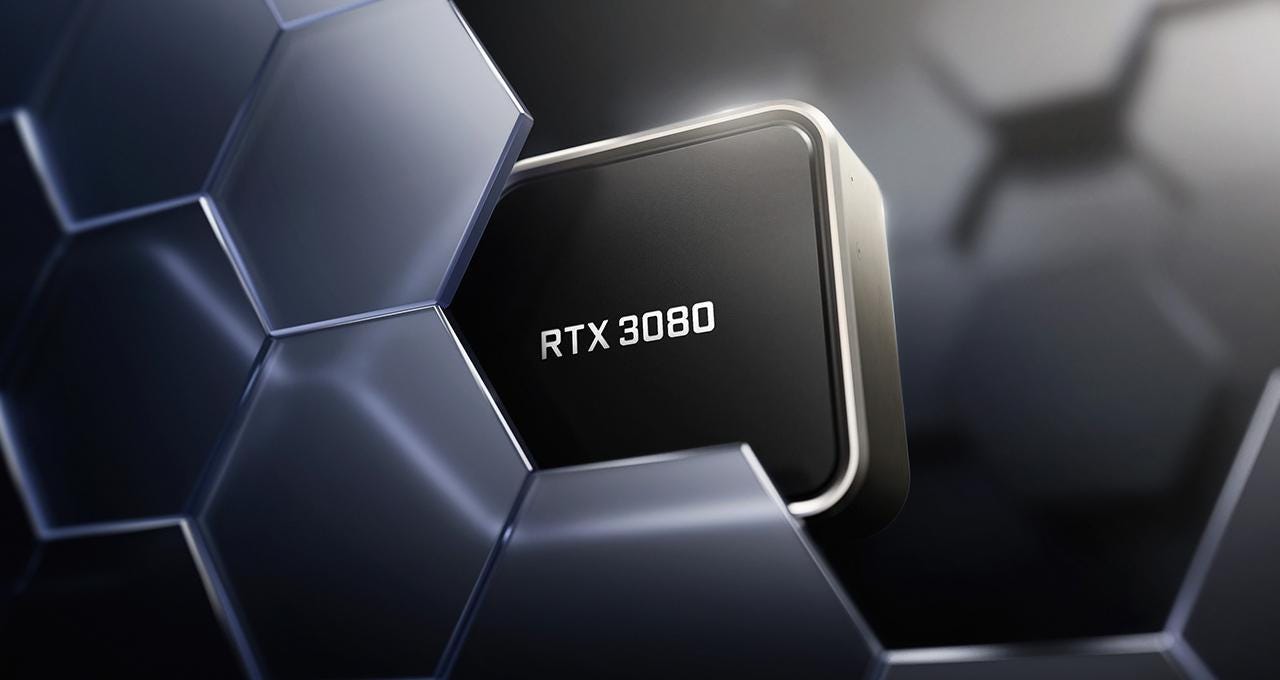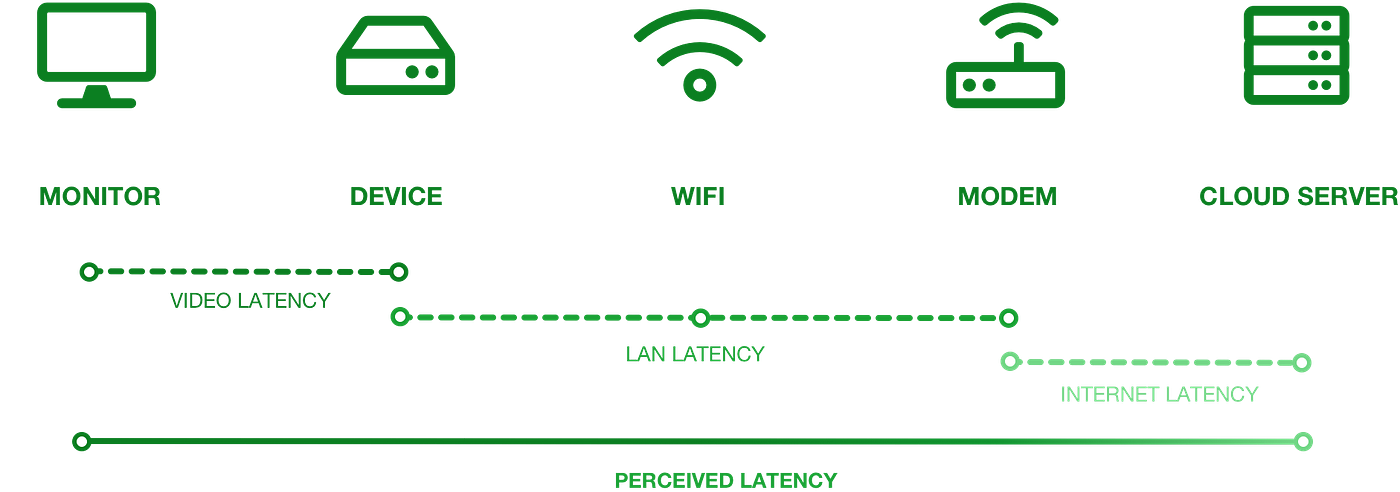Geforce Now Upload Speed or Download Speed
Getting serious about Geforce Now? Low-latency deject gaming isn't just virtually your internet speed.

Geforce Now'due south exquisite 3080 tier has made us cloud gamers dive dorsum in the annals of PC gaming sorcery.
Is this a expert thing? On 1 mitt…circuitous configuration is not quite what cloud gaming was supposed to exist similar. Stadia, for example, essentially "Just Works". Except it works similar an entry-level last-gen console — underpowered with a small library.
Geforce Now 3080 is something else. At up to 4K 120fps and HDR, it really approaches what has hitherto simply been available locally. And local availability is a pipe dream — hardware is difficult to discover in these lean times.
Just it's not a uncomplicated trade. For many of us, jumping into GFN'south 3080 superpods entails some sacrifices forth the way. As of my writing, several data centres in Due north America are not "3080 Ready". This ways that if y'all are a 3080 subscriber, you may need to connect to a more than distant information centre than you're used to.
This can substantially affect latency. I accept the privilege of both very practiced internet and close physical proximity to a GFN data centre. As such, I could get superb (ie. low) pings at the regular 1080c-to-2080d level — and so much then that even with a mouse and keyboard, the difference between GFN and my byzantine ageing eGPU rig was negligible. Yet, being that the nearest "3080-Set up" data centre is essentially further away, my ping is more double compared to my shorter-hop connection. And you can really feel that latency, which makes the swap to the 3080 tier bittersweet.
This article is for folks who have a similar problem. Or maybe started with a higher ping to begin with. Accept hope! There are things you tin do — particularly if you have access to the college frame rate offered in the 3080 tier.
I'thousand writing this for Mac users, but the procedure for PC users ought to be the same.
Mostly, we call back of latency as ane of the principle limiting factors of cloud gaming, and for skillful reason: if you take a high ping to the streaming server, chances are that the human relationship to pixels and button pushes are going to be frustratingly slow. But after doing what you can about advice strength — and there'south lots you can exercise — it's useful to remember that at that place is local latency in your rig equally well.

So allow's await at two sides of that spectrum.
Your information connexion
Properly considered, the latency between your device and GFN's servers begins with your device's connectedness to your router (your LAN), and ends with the server. Only at that place are obviously some knots in that rope: your WIFI signal, your local internet traffic, your modem connectedness, and so on. Bated from moving closer to a GFN datacenter (earlier which betoken, consider that a panel purchase may exist more than affordable!), and upgrading your ISP programme, y'all are left with options for solidifying your connection to your Internet service provider modem.
I'grand not going to get over optimizing your LAN in item, because in that location's loads of information out there. Requite it a search. That said, some helpful pointers:
i. Brand sure your wifi router is connected to your modem with a loftier speed ethernet cable
2. How nearly directly connecting your device to your modem with a similarly high speed ethernet cable? It's probably not as difficult equally y'all think. This is probably the cheapest and best thing you can do in your quest for lower latency
3. If you're stuck with wifi, think most how y'all can make the wifi signals easier for your device to selection up. Consider repositioning your wifi router such that information technology sends less of its waves into blind corners. Try to improve its line of sight to your streaming device. Larn nigh signal and noise measurements, and (on a Mac) option-click your wifi menubar icon to see what the reception is similar where y'all're sitting. Finally, consider what else is on your wifi in your proximity. How much wifi traffic is existence split off in your general direction, merely to a unlike device?
4. What else is happening on your device? Could in that location exist backup processes running while you lot're streaming? I discover Backblaze's fill-in routine to have huge furnishings on my ping. TripMode is a great niggling Mac utility for temporarily putting the brakes on the myriad network access your Mac does under the hood.
Allow the states assume you lot've done due diligence optimizing your LAN, and your ping to GFN is every bit proficient as information technology'due south going to get. For me, the transition to a 3080-ready data heart was enough to make me quite disappointed with the upgrade, despite my stone-solid net and strong LAN connectedness. This is where we go back to the PC gaming sorcery.
Your video signal
Here's the thing nearly GFN's superb 120fps offer: it's not only for high-refresh displays. If yous want, you can forcefulness GFN to send you 120fps, if you can't get the commensurate bitrate from your Isp.
Why do this with a typical 60hz display? Indeed all but the very newest MacBooks cannot do any amend with their internal screen. The matter is that even if your display can just prove 50% of the frames that are received from GFN, your device nevertheless receives many more than frame refreshes than standard 60fps. (100% more, if you're counting)

In theory, that means you lot tin go 100% improvement with latency at 120fps over 60fps, no matter how many of those frames your display tin can prove. For me, switching up to 120fps was an immediate and obvious improvement. (Of class, depending on your bandwidth chapters, forcing 120fps might result in a very compressed image — come across above for because your cyberspace connectedness).
Now, your 60hz display may not handle that 120fps stream gracefully. For me, I got the sort of screen tearing that is typical of vsync-disabled games not synced to refresh charge per unit. If this happens to you lot, try experimenting with GFN's vsync settings. They more often than not recommend setting their vsync to adaptive. Try this with different resolution outputs, and see if you can find a sweetness spot where high-refresh streaming reduces latency without ruining video. (Don't double-dip: y'all probably should non enable in-game vsync if you're using GFN'due south vsync).
Supposing yous accept a higher-refresh display, you may all the same notice yourself doing some hacking. This may, for instance, be one of the showtime instances where y'all're moved to actually enable a refresh charge per unit higher than 60hz. Most streaming video caps out at a blazing 24fps, and Os-level blitheness at loftier refresh rates is fine, but hardly a reason to go and purchase a fancy monitor.
For me, I was outputting my MacBook's video to an LG B7 — a lovely HDR TV that tin do 4K at 120fps. When buying my MacBook, I ordered a DisplayPort 3-to-HDMI 2.0 cable to go the the TV. Officially, HDMI 2.0 caps out at 60hz @ 4K, which at the fourth dimension of buying seemed the highest fps I could mayhap hope to achieve at 4K. (Be conscientious — most cables of this sort will actually exist HDMI 1.3 or 1.iv, which tops out at a beggarly 30hz @ 4K)
But once again, the fabulous 3080 tier has opened doors I didn't remember I'd take access to on my MacBook. Suddenly 120hz seemed like a good thought. But not with this cable — in fact, MacOS Catalina was unwilling to even bump upward the refresh rate at 1080p. (information technology would do so in Windows — kudos to them for surfacing these controls for the nerds) And 1440p — the pinnacle GFN resolution on Macs and PCs through the 3080 tier, as of my writing — was also capped to 60hz. I'd need an HDMI ii.i cable to work this feat.
Lots of numbers. The point is that video cables have bandwidth capacities, just like your internet connexion. And like your connectedness, you want to maximize your bandwidth equally much equally you tin, throughout the delivery pipeline, to enhance your interactive feel.
Here's some other tip along the same lines: TVs like the LG take "Game Modes" that are actually low-latency modes. Why do they practice this? Why isn't every mode low-latency? Presumably because HDR TVs mail service-process non-HDR video signals to look nice and punchy on the brandish. "Game Mode" disables this, delivering the video signal every bit fast equally possible without estimation.
The issue, however, was noticeable. Latency again was much better with Game Fashion enabled. However, suddenly my stream from GFN was much dimmer compared to the rest of the OS.
This was because I had HDR enabled in macOS.
Windows x users that accept futzed with HDR since the early on days volition be familiar with this effect. Not-HDR signals (GFN currently does not stream HDR except for Nvidia Shield) that demand to exist displayed in the context of OS chrome that has HDR enabled tend to await…weak. This is considering the signal does not encode the increased dynamic spectrum of HDR color. Without post processing, the betoken may wait dim compared to its HDR window-dressing.
And with a display like my LG in Game Fashion, where there is no post-processing, the video did indeed await dim and insipid. For now, the solution is…to plow off HDR in the Os. When GFN starts delivering HDR for Macs and PCs, the result should exist revisited.
Simply again, the principal offender here was likely the HDMI 2.0 cablevision. A 60fps 1440p stream in macOS rendered at 4K brandish resolution looked much meliorate. HDMI two.i ought to have sufficient bandwidth to evangelize an HDR signal, with or without bodily HDR content from GFN, at the full 120fps. (I oasis't gotten my new cable withal to verify this)
Summary
Subsequently doing what you lot can to enhance your data connection to GFN'due south servers, have some fourth dimension to pour over your local video setup. Make certain you're receiving as many frame updates as possible from GFN, send them to your display at the highest bandwidth possible. Finally, brand sure your display is set up to turn those frames to photons as fast equally it maybe can.
You'll be glad yous did.
Source: https://medium.com/@tmrc/getting-serious-about-geforce-now-low-latency-cloud-gaming-isnt-just-about-your-internet-speed-247da1b07f19
0 Response to "Geforce Now Upload Speed or Download Speed"
Postar um comentário